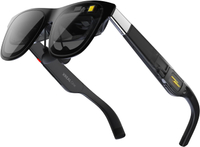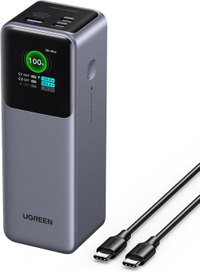I ditched my laptop for a pocketable mini PC and a pair of AR glasses — here’s what happened
My whole desk setup now easily fits into a backpack and I can take it anywhere
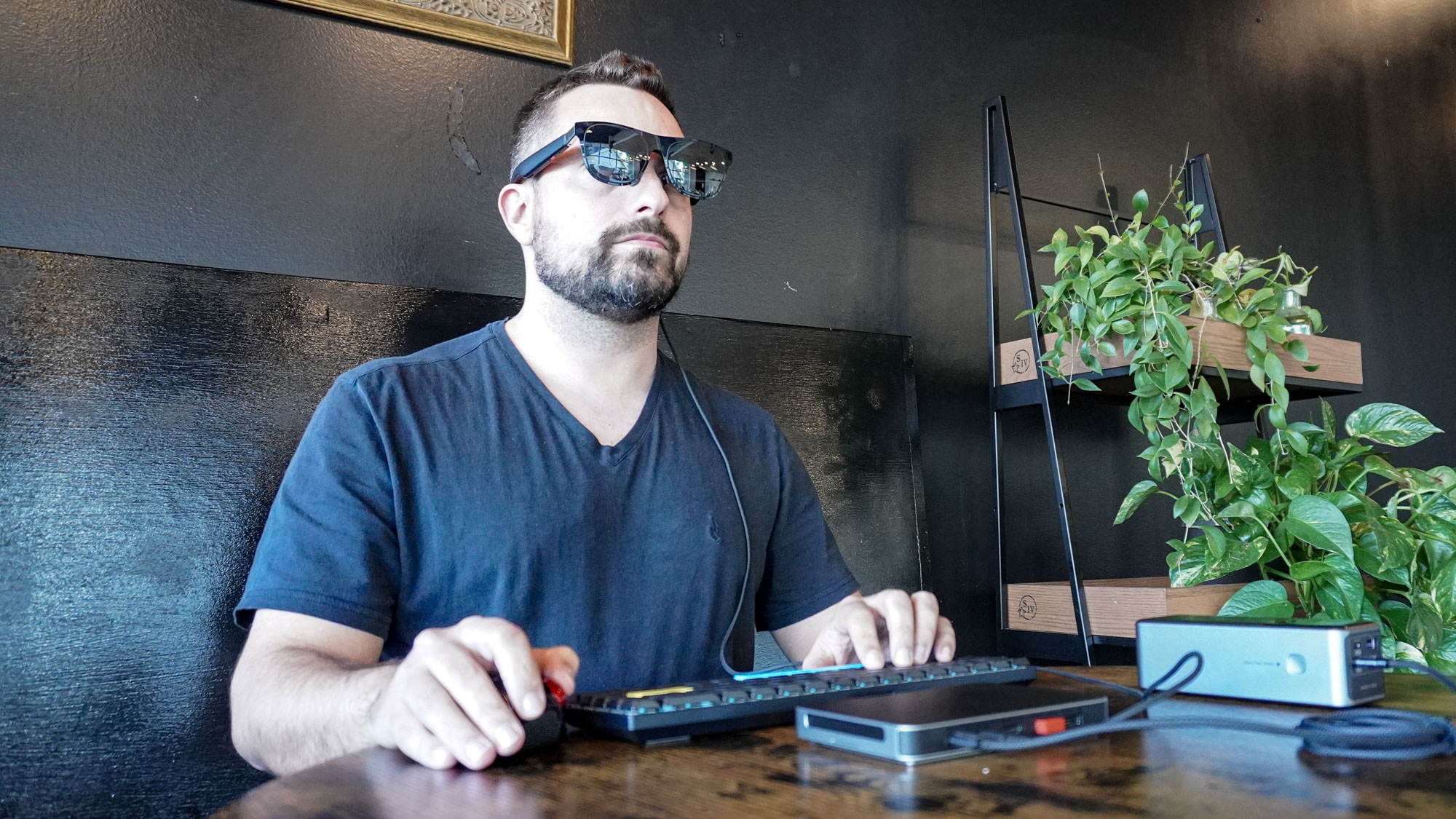
I work best seated at my desk setup with multiple screens in front of me However, when I travel or just need to get out of the house for a bit, I can’t bring my setup with me—or at least I thought I couldn’t.
Now I know what you’re thinking. Why don’t I just go with one of the best laptops instead? Well, I’ve tried and while my trusty ThinkPad hasn’t let me down yet, I still end up using it with extra peripherals and oftentimes, a portable monitor too, which kind of defeats the purpose of using a laptop in the first place.
Over the past few years, I’ve also downsized from a full desktop and I now do the majority of my work from one of the best mini PCs. I like the experience of using a mini PC over a desktop or a laptop so much that I even took a mini PC with me to Taiwan last summer.
Of all the mini PCs I’ve tested and reviewed, one in particular has stuck with me and that’s due to how portable it is and the fact that it uses a USB-C port for power instead of a barrel port connector. After trying out a pair of AR glasses for the first time when I spent two weeks with the iPad mini, I decided why not combine the two together and throw one of the best power banks into the mix for good measure. Then, I could truly work from anywhere just like I do from the comfort of my home office.
I’ve been using a pocketable mini PC, a pair of AR glasses and a massive 25,000 mAh power bank together for the past two weeks and it’s completely transformed the way I work. Here’s how I came up with this novel approach to on-the-go computing to better fit my unique workflow.
Pocketable meets private
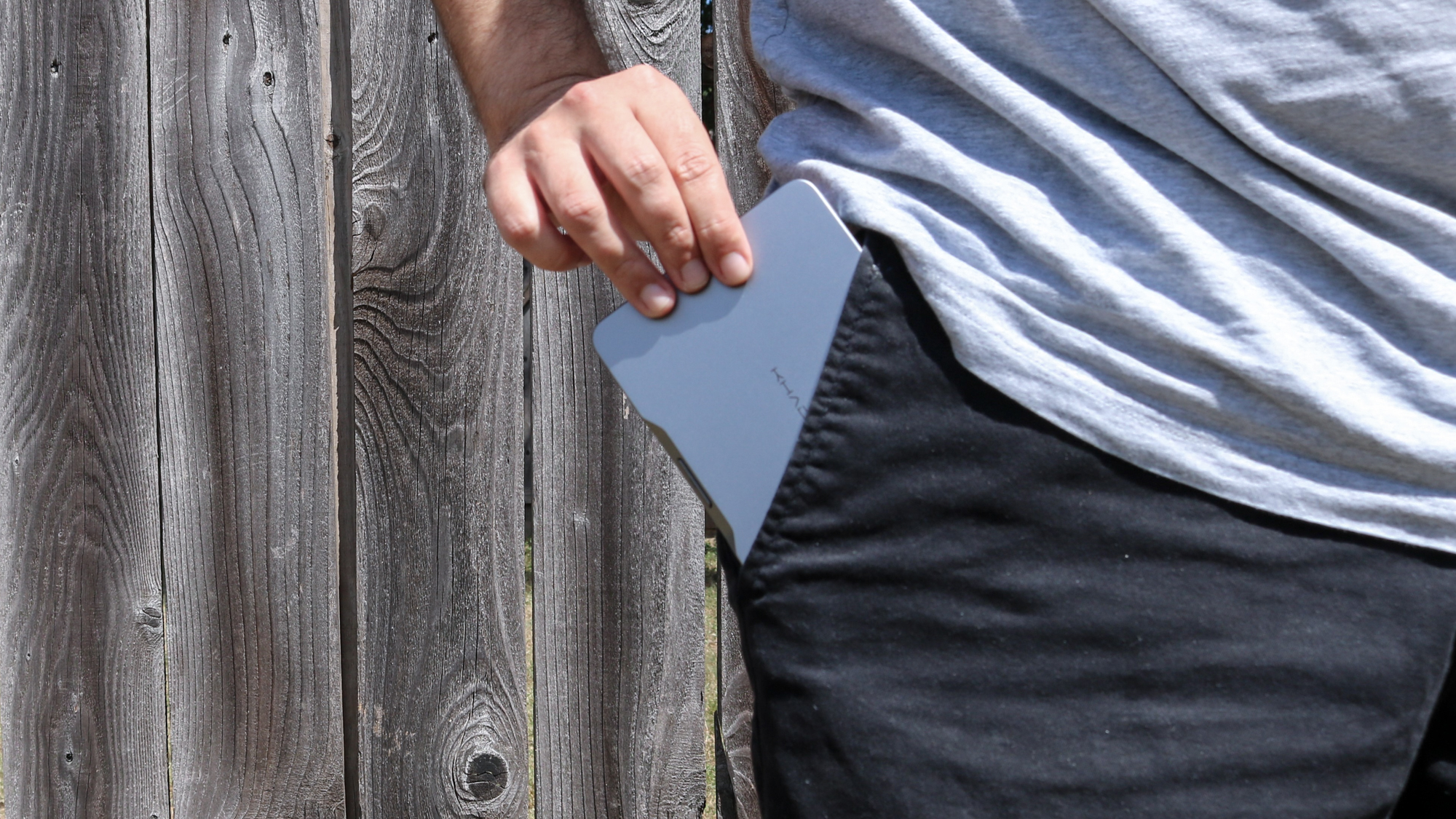
Last year, I got to try out the Khadas Mind and even now, there’s no mini PC quite like it. Instead of being rectangular or having a cube-like shape, the Mind looks a lot more like one of the best external hard drives. Not only is it powerful, it’s also pocketable thanks to its tiny 5.75 x 4.13 x 0.79-inch frame.
Another thing that sets the Khadas Mind apart from other mini PCs is that Khadas has created a whole ecosystem of accessories around it. There’s the standard Mind Dock which adds more ports, dual-monitor support, a fingerprint reader and even a volume knob on the side, as well as the premium Mind Graphics dock which adds even more ports as well as a full-size Nvidia RTX 4060 Ti desktop graphics card.
Khadas is also working on a portable display with a keyboard that magnetically attaches to this mini PC like both of these docks do if you prefer a more laptop-like experience.
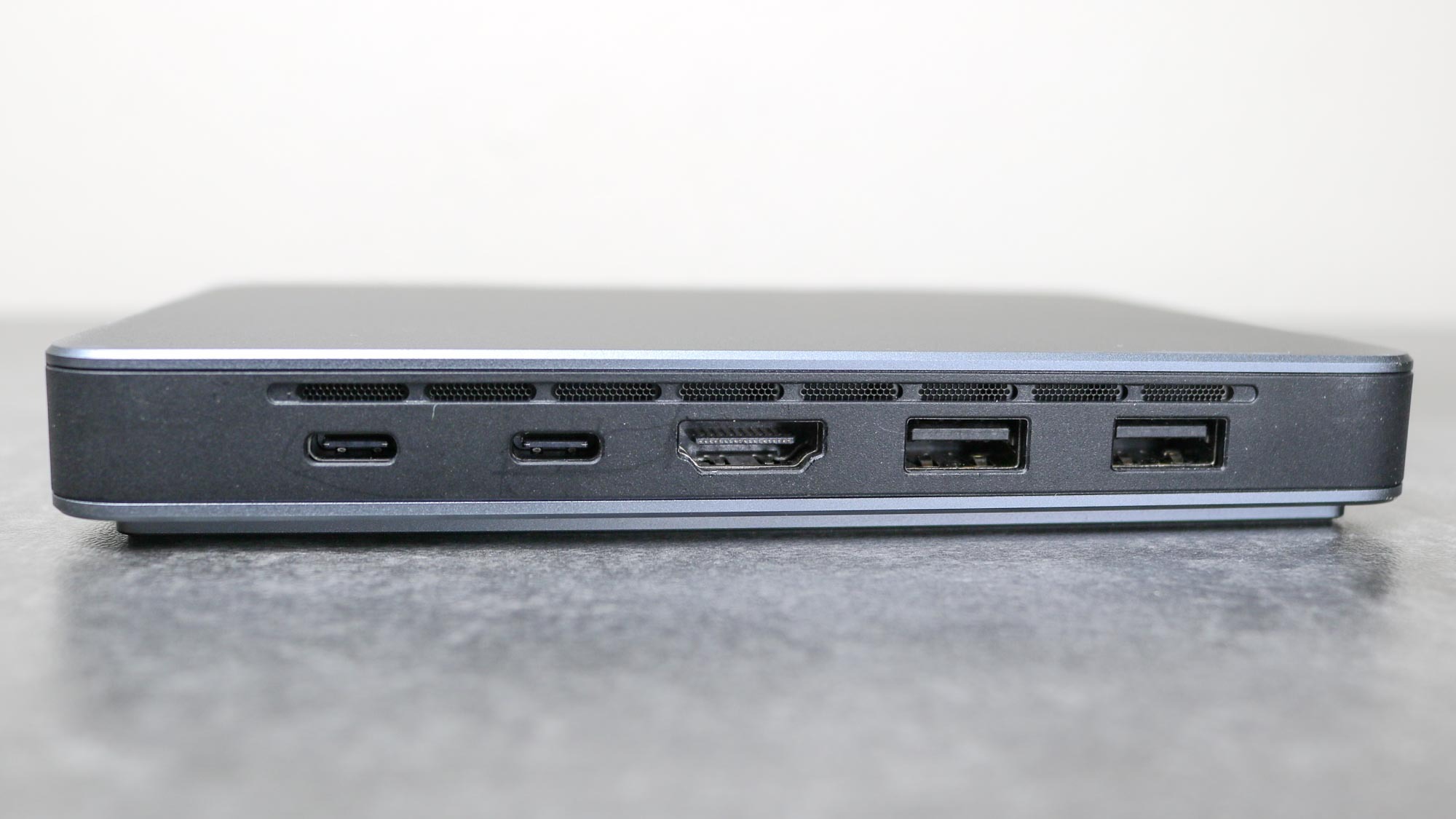
The main reason I chose the Khadas Mind for this project is because of its ports and portability though. Like I said before, it uses a USB-C port for power (on the far left) but it also has a second, full-featured USB-C port for video out in addition to two USB-A ports and an HDMI port. With one USB-C port for power and another for video, the Khadas Mind turned out to be the perfect fit for this one-of-a-kind mobile setup.
After I reviewed the original Mind last year, Khadas unveiled the Mind 2S at CES back in January as a more powerful followup to the Mind 2. I had already sent the Mind 1 back, so I reached out to Khadas directly and they sent over this new more powerful mini PC for this project, though I am working on a review of it too.
While the Mind 1 handled everything I threw at quite well, the Mind 2S is an absolute powerhouse with an Intel Core Ultra 7 255H processor, 64GB of LPDDR5X RAM and a 2TB SSD. Khadas also upgraded its two USB-C ports to Thunderbolt 4 ones for faster data transfer speeds and enhanced display capabilities.
This pocketable and modular mini PC packs a ton of power into a tiny package. The Mind 2S is powered by an Intel Core Ultra 7 255 H processor, comes with 64GB of LPDDR5X RAM and has a 2TB SSD. It also features a built-in battery for when you want to move from one desk to another without having to shut down your computer and on the bottom, there’s a spare M.2 expansion slot if you want to add even more storage.
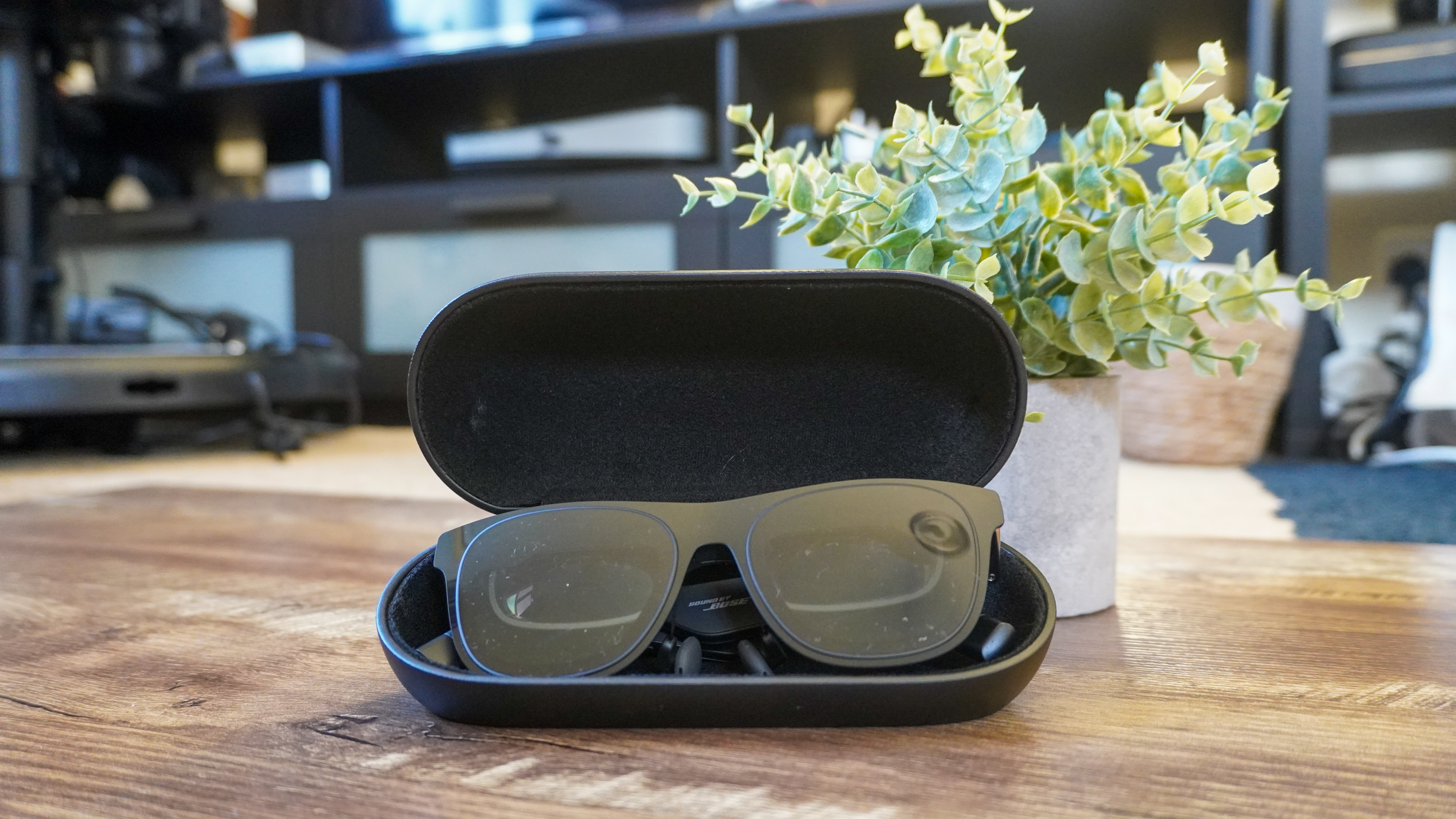
As I haven’t had a chance to try out a pair of the best smart glasses yet, I had my colleague Jason England recommend a pair for this project. He suggested the Xreal One AR glasses as they have Xreal’s X1 spatial computing chip built-in. This chip gives you full control over the glasses’ 3 Degrees of Freedom tracking and also lets you go from a standard 16:9 display to an ultrawide one at the push of a button.
Another thing that I really like about the Xreal One glasses is that unlike the Meta Quest 3 or even the Apple Vision Pro, they don’t have a built-in battery. Not only does this make them lighter and more comfortable to wear, you don’t have to worry about charging which would make my mini PC/AR glasses setup more difficult to use at a moment’s notice. Instead, they draw their power from the device they’re connected to.
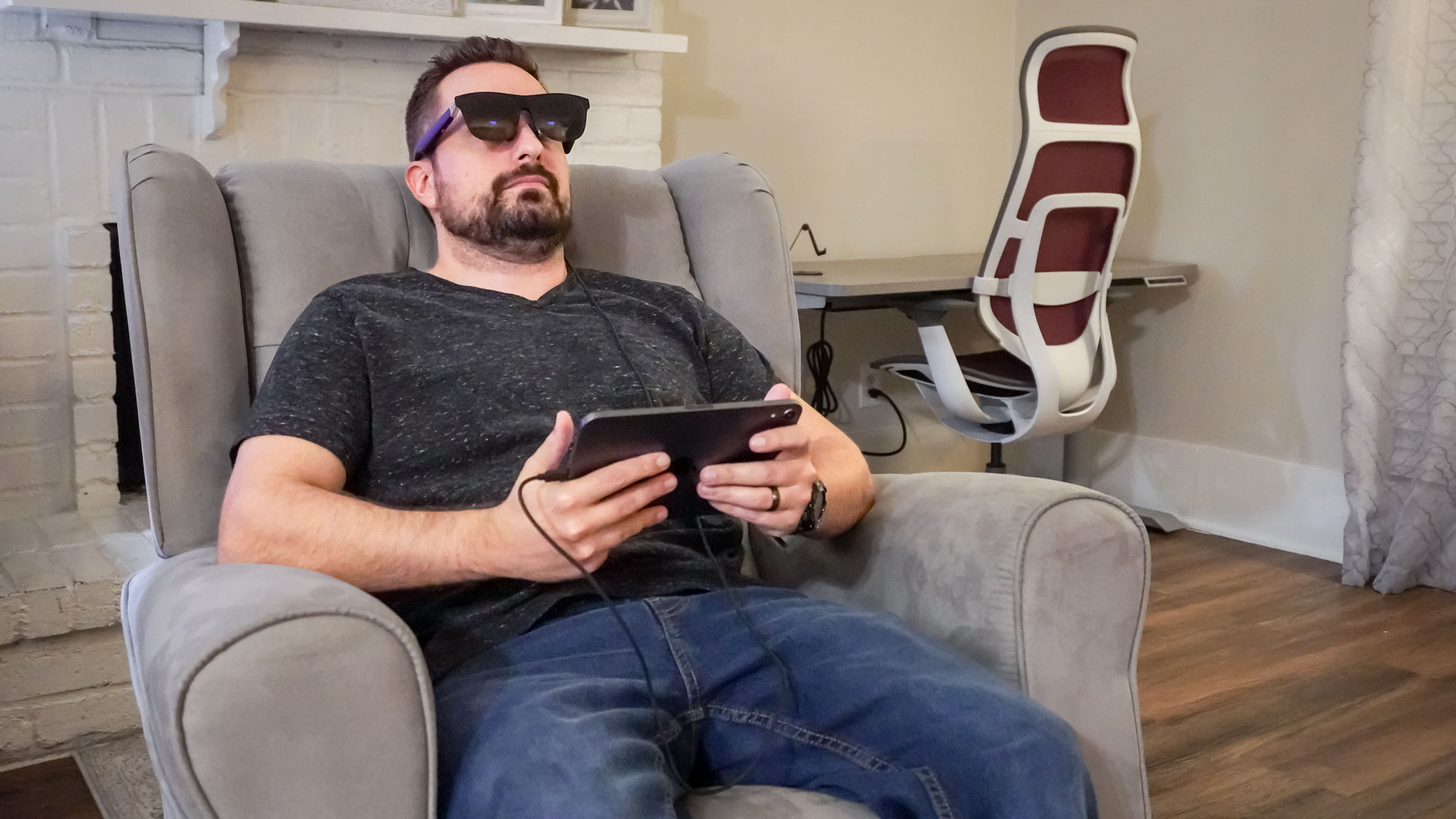
After unboxing the Xreal Ones that Xreal sent over to help me turn this dream into reality, I was very impressed by how they worked immediately when plugged into the iPad mini. I didn’t have to configure anything and they were truly plug and play.
If you’re thinking about trying out a pair of AR glasses yourself, just make sure that your smartphone, tablet or whatever device you want to use them with comes equipped with DisplayPort Alt Mode over USB-C. Otherwise, you’re going to need an adapter, which adds a bit of bulk and makes using them slightly more complicated.
Xreal One AR Glasses: $499 @ Amazon
These AR glasses feature dual 0.68 micro OLED displays that can put up to a 147 inch screen right in front of your face with a 50 degree field of view. The built-in X1 chip lets you access menus and switch between 3 Degrees of Freedom tracking so that you can have a picture anchored in place or smoothly following your head movements. The Xreal One glasses also have built-in speakers from Bose on either side so you don’t need to use headphones with them. The best part though is that you just plug them into a compatible USB-C equipped device to get started.
Powered and portable
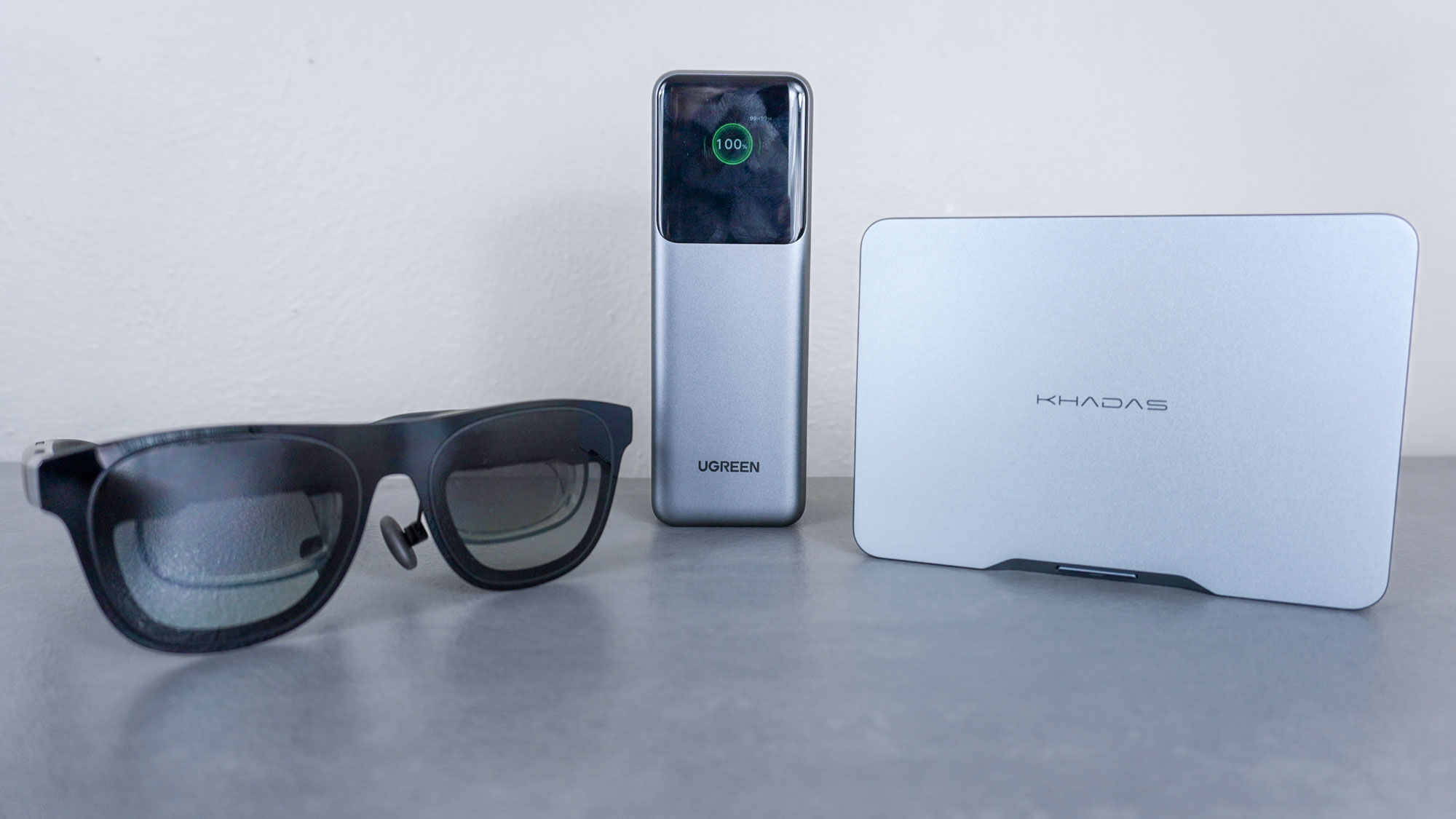
With the Khadas Mind 2S and the Xreal One AR glasses in hand, I just needed one more thing: a way to power them. At home or at a hotel, I was able to power this whole setup using a GaN charger but I wanted a way to use it during those times when there wasn’t an outlet nearby.
To that end, I decided to pick up the 25,000 mAh version of the Ugreen Nexode Power Bank. I’ve always had a great experience with Ugreen’s chargers, cables and other products in the past, so I wanted to see how well its largest power bank performed. Another reason that I picked this particular power bank is that it’s flight approved but more on that later.
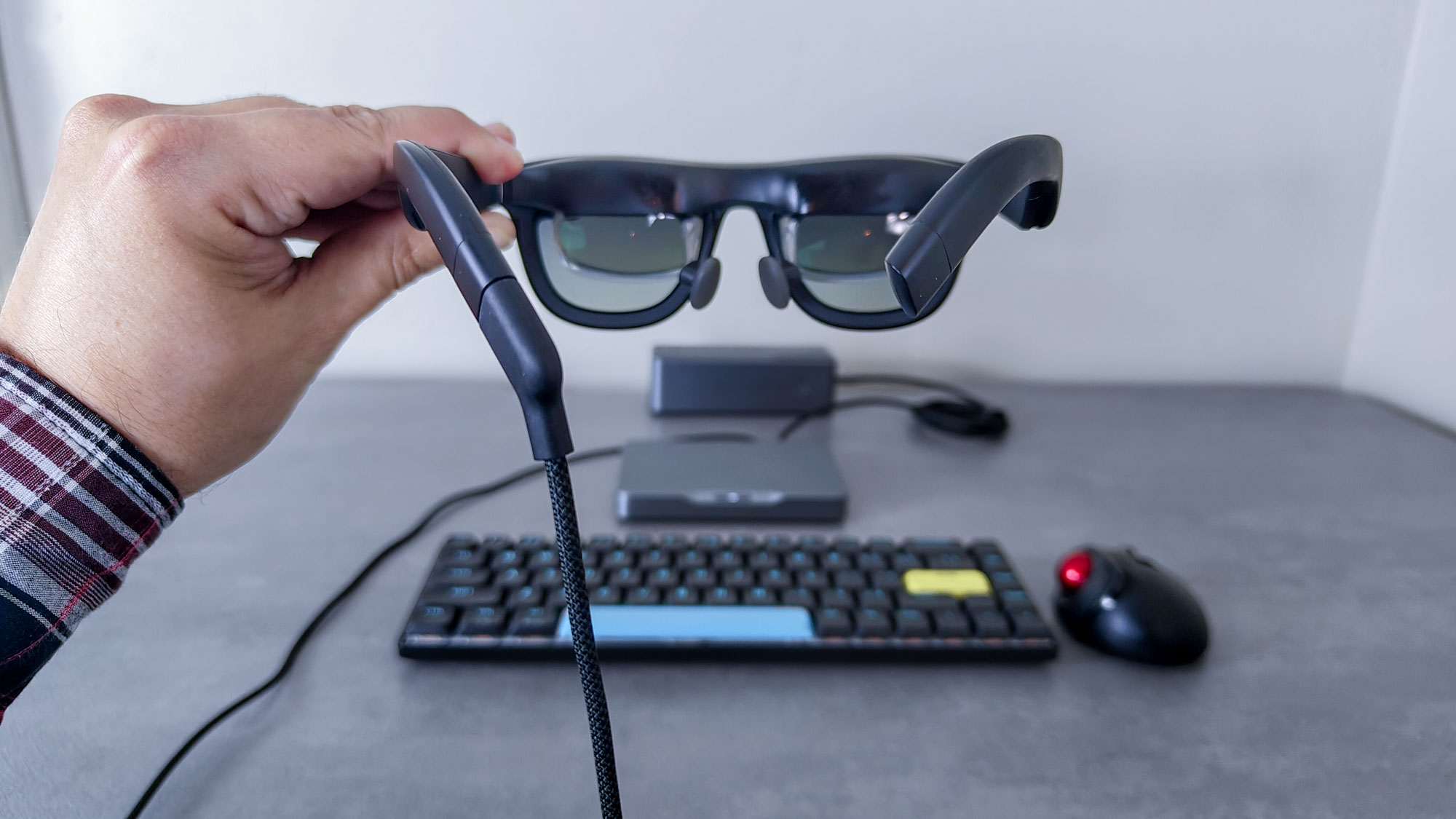
With two USB-C ports at the top with one capable of putting out 100 watts and the other able to deliver 140 watts of power, I had more than enough power on hand for both the Khadas Mind 2S and the Xreal One AR glasses. I paired the two devices with my favorite budget mechanical keyboard ($40, Amazon) and a mini trackball mouse from Elecom.
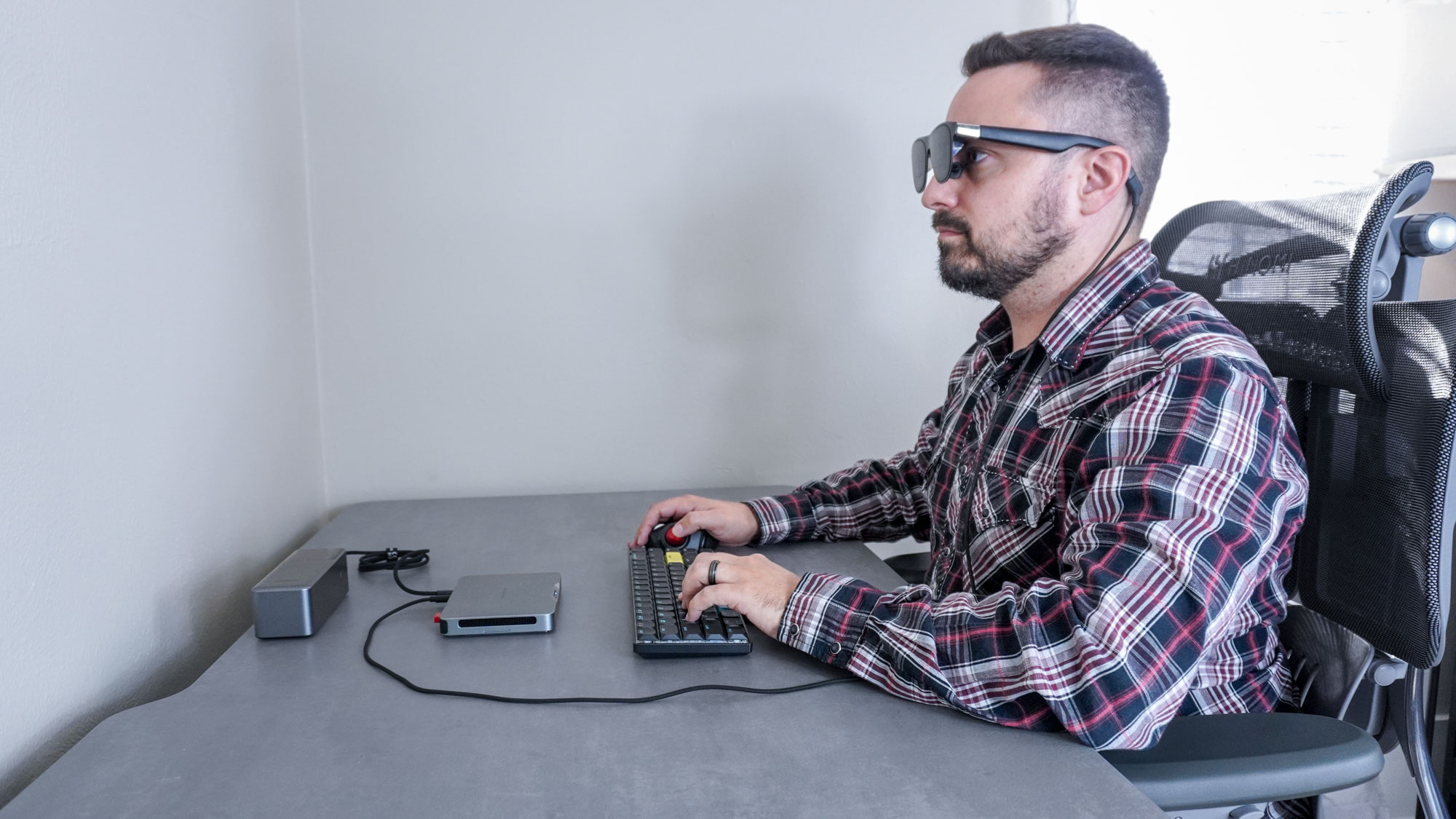
Much to my surprise, it didn’t take long at all to get used to working while wearing AR glasses. Maybe it was because this was the same mechanical keyboard/trackball mouse combo I always bring with me while traveling but I settled in to using this setup in no time at all.
Now though, it was time to take it out into the world and see whether it was really better for me than using a laptop.
This massive power bank comes with enough power to fast charge your laptop at up to 140 watts but it can charge three devices simultaneously. There’s a color display on the front that lets you know how much battery you have left as well as how much power each of the devices you have connected to it are currently using. The Ugreen Nexode Power Bank is also Flight Approved which means you can bring it on your next trip without getting hassled by airport security.
A whole new way to work

As silly as I felt taking this picture at my local coffee shop, I actually didn’t get any odd looks from the other patrons there. After connecting to the Wi-Fi, I got to work editing reviews and writing stories just like if I was back home.
One thing that I really liked about wearing the Xreal One glasses is that you can change their transparency. For instance, at home, I really enjoyed using the completely black theater mode while watching content online. However, while at the coffee shop, I switched them to clear mode so I was still aware of my surroundings.
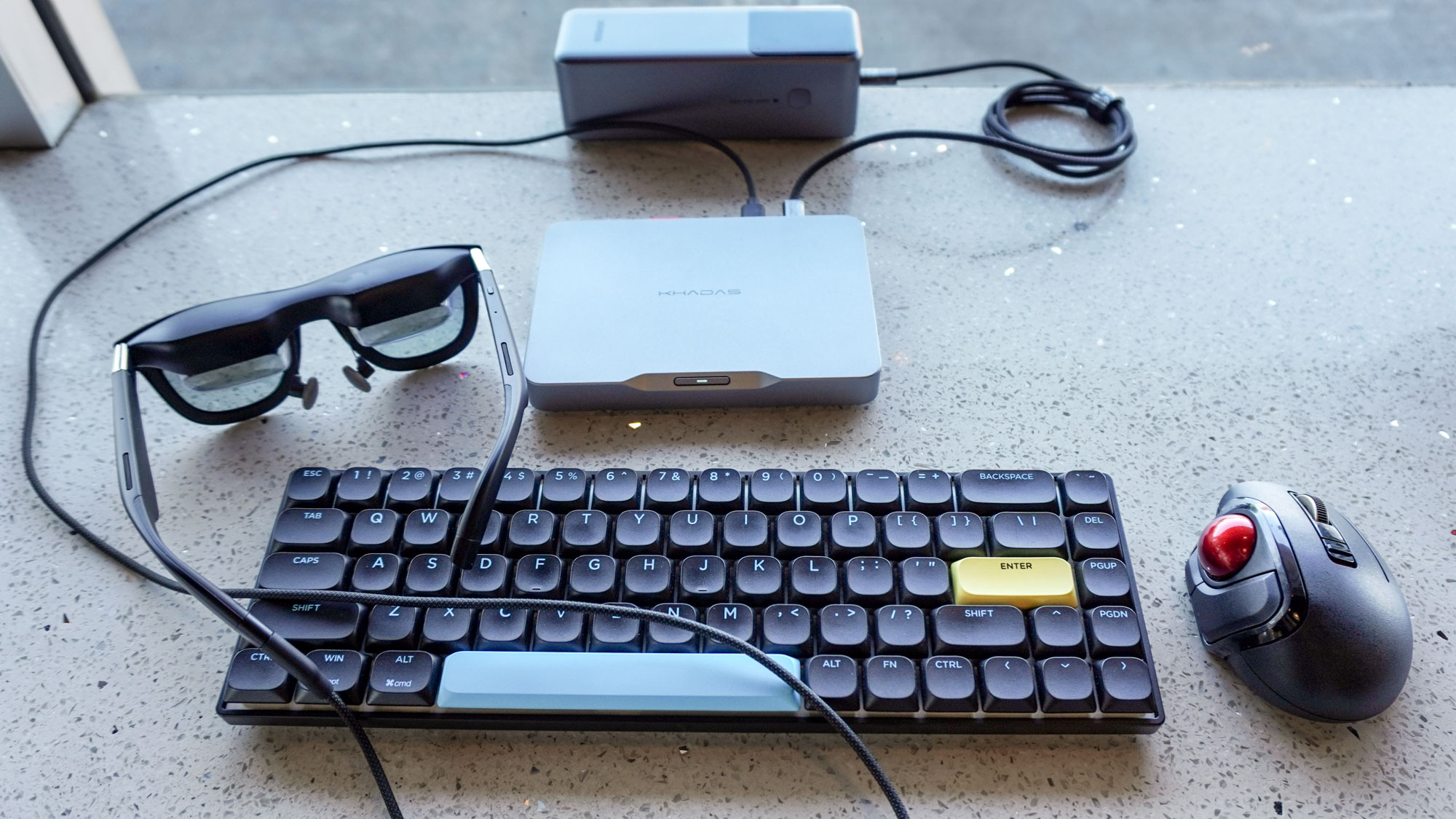
You can’t take native screenshots directly from within the Xreal One glasses but what you see inside them is a sight to behold. With ultrawide mode enabled, I was able to have two full-size Chrome windows side by side just like on the dual-monitor setup I put together last month. However, clear mode took the whole experience up a notch as it made it feel like I was using a transparent monitor straight out of Minority Report.
Sitting at the window, I was able to watch the cars go by while I worked as if my desk was right up next to a window with a great view. I used to work in coffee shops a whole lot more back before I set up a home office in my house. With this setup though, I could easily see myself getting back out of the house and doing so again.
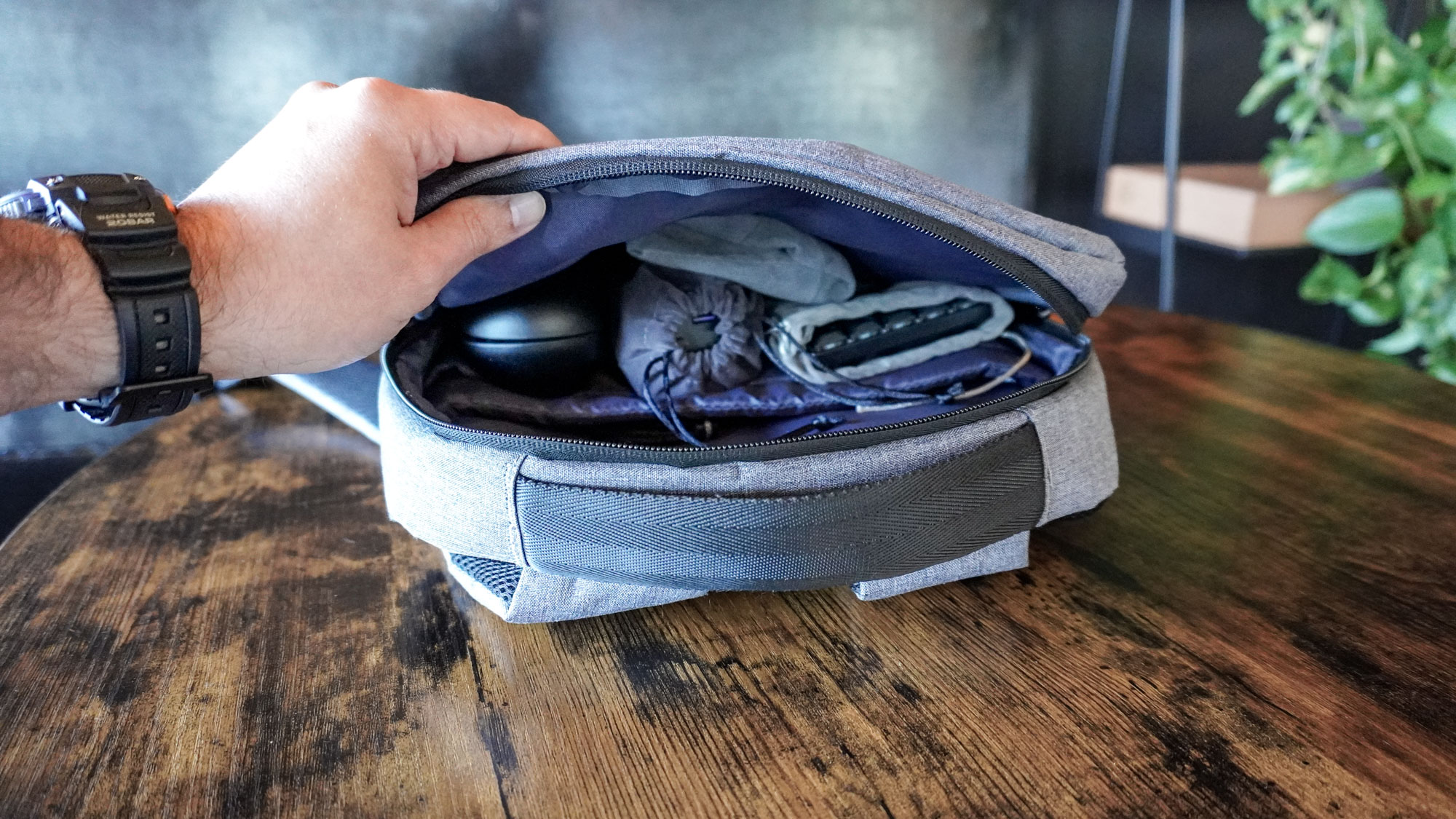
When it was time to head out, packing everything up into my bag was a cinch and only took me a minute or so. Surprisingly, the Ugreen Nexode Power Bank is the heaviest item in this setup at just over 500 grams while the Khadas Mind 2S weighs 435 grams and the Xreal One glasses weigh 84 grams.
Not just for coffee shops
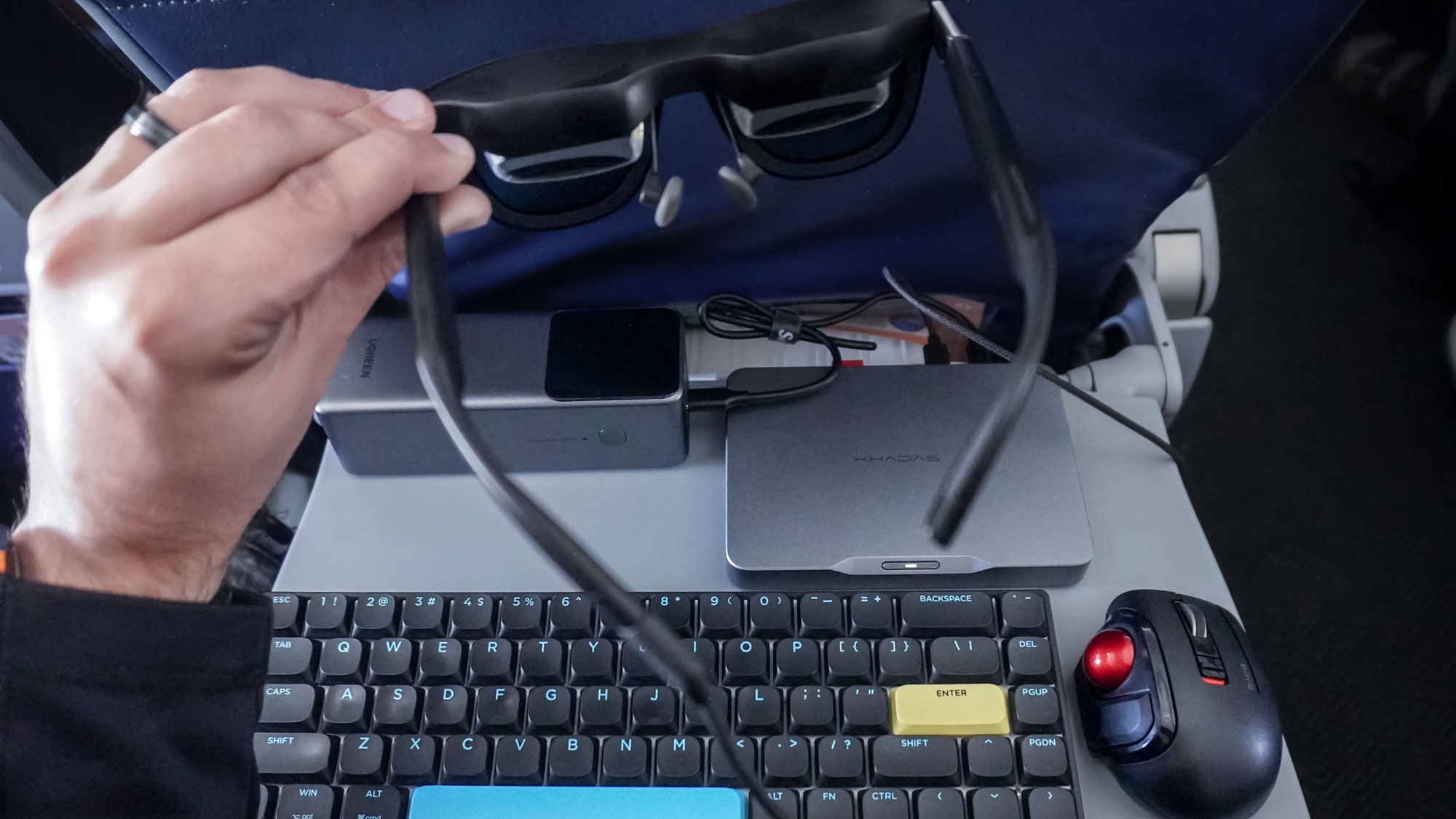
Now for the kicker. I actually brought this mini PC/AR glasses setup with me to New York last week when I went to try out the Nintendo Switch 2.
As the tray table on an airplane is known for being notoriously small, I decided to break out all my gear and try to set it up there too. It was cramped getting everything out of my bag but once I had it all set up, I was able to get the full desktop experience while cruising at over 30,000 feet up in the air.
After checking into my hotel, I broke out everything again and got to work. In fact, I wrote my entire hands-on review of the Switch 2 using this setup over the course of a few hours. Even though I was far from my desk, I felt right at home typing away with a pair of AR specs on my head. I even gave my guide on the best office chairs a big update while using this mobile setup and that too went surprisingly well.
I know that even if you made it this far, you still might be wondering why I don’t just work from a laptop instead. The big reason for me is that I love the feel of one of the best mechanical keyboards under my fingertips while typing along with the level of control and customizable buttons that I get with a trackball mouse. Another thing that has always turned me off from laptops is that you can’t easily swap out a broken keyboard or upgrade their components, that is unless you get one from Framework. Likewise, I’ve yet to see a laptop with an ultrawide display and I doubt I will anytime soon.
This setup has been kicking around in my head for months now but thanks to Khadas and Xreal’s help, I got to make it a reality. And after using it for the past two weeks, I can honestly say it’s even better than I expected it would be.
So what about you? Could you see yourself spending a full day working with smart glasses instead of using a monitor? Likewise, would you try this setup out if you had the chance? Let me know in the comments!
More from Tom's Guide
Sign up to get the BEST of Tom's Guide direct to your inbox.
Get instant access to breaking news, the hottest reviews, great deals and helpful tips.

Anthony Spadafora is the managing editor for security and home office furniture at Tom’s Guide where he covers everything from data breaches to password managers and the best way to cover your whole home or business with Wi-Fi. He also reviews standing desks, office chairs and other home office accessories with a penchant for building desk setups. Before joining the team, Anthony wrote for ITProPortal while living in Korea and later for TechRadar Pro after moving back to the US. Based in Houston, Texas, when he’s not writing Anthony can be found tinkering with PCs and game consoles, managing cables and upgrading his smart home.
You must confirm your public display name before commenting
Please logout and then login again, you will then be prompted to enter your display name.

